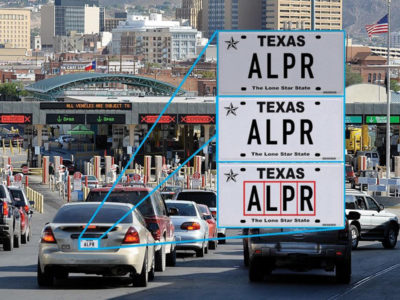
The National Highway Safety Administration published a Texas A&M Transportation Institute (TTI) report, State of Knowledge and Practice for Using Automated License Plate Readers for Traffic Safety Purposes, Apr. 1, 2021, in the National Transportation Library. The authors include TTI Associate Research Scientist Ben Ettelman, TTI Associate Research Scientist Laura Higgins, TTI Center for Alcohol and Drug Education Studies Director Troy Walden and TTI Multimodal Planning Division Head Johanna Zmud, who served as the study’s principal investigator. The John A. Volpe National Transportation Systems Center also provided valuable guidance and support for the project.
Automated license plate reader (ALPR) systems use stationery and mobile cameras to scan vehicle license plates and identify any matches with a database of criminal activity. If a match is found, ALPR sends an alert to the law enforcement officer on duty, who can then respond in real time and pull over the vehicle. Traffic safety examples of ALPR use include drivers with revoked, suspended or restricted driver licenses; vehicles that illegally passed a stopped school bus; and vehicles involved in a high number of (or hit-and-run) crashes.
“ALPRs can be highly effective in identifying habitual traffic offenders and helping to get them off the road,” Zmud says. “But it’s also important with ALPRs that police departments strictly enforce policies on data quality, system security, compliance with applicable laws and regulations, and data and information privacy.”
The study documented ALPR’s uses, challenges and effectiveness for traffic safety purposes. The researchers conducted a literature review and six case studies with law enforcement agencies (LEAs) from across the United States. The findings suggest that LEAs mainly use ALPR for monitoring criminal activity, but traffic safety was an important secondary use for the ALPR technology. As identified by Zmud and her team, challenges associated with ALPR use include maintenance on the ALPR systems and the need for funding ALPR-specific programs at LEAs. However, the LEAs recognized the efficiency of ALPRs in reading thousands of license plates per day and the resulting time saved for officers in the field, who can now spend their time pursuing other duties requiring their attention.
The report encourages police departments to take another look at how they can use ALPRs — maybe in a new way they hadn’t tried before — to keep citizens on the roadways safer. According to a LEA from the case studies, drivers with revoked, suspended or restricted driver licenses are 2.2 times more likely to be involved in serious or fatal crashes than other drivers in Texas.
“One LEA used ALPR for about a year and stopped 180,534 vehicles flagged by the system. In total, the LEA made 3,324 arrests for safety-related driving offenses — including driving without a valid driver license and violating the terms of a provisional driver license — and issued several thousand citations for lesser offenses such as driving without insurance,” says Walden. “Compared with traditional patrol techniques and tactics, ALPRs are force multipliers that allow LEAs to vastly increase the number of violators found and keep all travelers safe.”